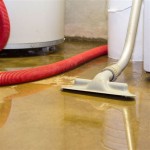What Kind of Paint Do You Use On a Concrete Basement Floor?
Selecting the appropriate paint for a concrete basement floor is crucial for both aesthetics and longevity. Unlike other types of flooring, concrete is porous and susceptible to moisture, which can lead to paint failure if the wrong product is used. Therefore, understanding the characteristics of different paint types and their suitability for basement environments is essential.
The primary considerations when choosing a paint for a concrete basement floor include moisture resistance, durability, resistance to chemicals and abrasion, and the preparation required for proper adhesion. The goal is to create a surface that is not only visually appealing but also protected from the potentially harsh basement environment.
Understanding Concrete's Unique Challenges
Concrete, while seemingly durable, presents specific challenges when it comes to painting. Its porosity allows moisture to wick up from the ground, potentially leading to paint blistering, peeling, or mold growth. Furthermore, concrete is alkaline, and some paints are susceptible to degradation from this alkalinity. Additionally, the rough texture of concrete can make it difficult to achieve a smooth, uniform finish without proper preparation.
A critical factor is the presence of a moisture barrier beneath the concrete slab. If a proper vapor barrier is not in place, or if it is compromised, the moisture transfer through the concrete will be significantly higher. Confirming the existence and integrity of the vapor barrier is a crucial step before selecting and applying paint.
Efflorescence, a white, powdery substance that appears on the surface of concrete, is another common issue in basements. It is caused by soluble salts being drawn to the surface by moisture. Before painting, efflorescence must be removed thoroughly, and the underlying source of moisture must be addressed to prevent its recurrence. Failure to do so will almost certainly lead to paint failure.
Epoxy Coatings: A Durable and Protective Option
Epoxy coatings are often considered one of the best options for concrete basement floors. They are known for their exceptional durability, resistance to chemicals and abrasion, and ability to create a waterproof barrier. Epoxy coatings consist of two components: a resin and a hardener, which, when mixed, create a chemical reaction that results in a hard, durable finish.
There are generally two types of epoxy coatings available for residential use: water-based and solvent-based. Water-based epoxies are lower in VOCs (volatile organic compounds) and are easier to clean up, making them a more environmentally friendly choice. Solvent-based epoxies, on the other hand, typically offer superior durability and chemical resistance, but they require more careful handling due to their higher VOC content and flammability.
Before applying an epoxy coating, the concrete floor must be thoroughly cleaned and prepared. This typically involves removing any existing coatings, patching cracks or holes, and etching the surface to create a profile that the epoxy can adhere to. Acid etching or mechanical grinding are common methods used to prepare the concrete surface. Following the manufacturer's instructions carefully is essential for achieving optimal results.
Epoxy coatings are particularly well-suited for basements that are used as workshops, garages, or other areas where the floor is likely to be subjected to heavy use or chemical spills. Their high durability and resistance to staining make them a practical choice for these applications. However, epoxy coatings can be more expensive than other types of paint and may require professional installation for best results.
Concrete Paints: Acrylic and Latex Options
Acrylic and latex paints, specifically those formulated for concrete floors, are another viable option for basement floors. These paints are typically less expensive and easier to apply than epoxy coatings, making them a popular choice for homeowners on a budget. They offer good adhesion, durability, and resistance to moisture, although they may not be as robust as epoxy coatings.
When selecting acrylic or latex paint for a concrete basement floor, it's important to choose a product that is specifically designed for concrete. These paints typically contain additives that enhance their adhesion, durability, and resistance to moisture and alkalinity. Look for paints labeled as "concrete floor paint" or "masonry paint."
Proper preparation is just as crucial with acrylic and latex paints as it is with epoxy coatings. The concrete floor must be clean, dry, and free of any loose debris or coatings. Etching the surface to create a profile is also recommended to improve adhesion. Applying a primer specifically designed for concrete can further enhance the paint's adhesion and durability.
Acrylic and latex paints are a good choice for basements that are used as living areas or recreational spaces where the floor is not subjected to heavy use or harsh chemicals. They are available in a wide range of colors and finishes, allowing homeowners to create a visually appealing and comfortable space. While they may not offer the same level of protection as epoxy coatings, they can still provide a durable and long-lasting finish if properly applied and maintained.
Moisture Testing and Mitigation Strategies
Before applying any type of paint or coating to a concrete basement floor, it is essential to conduct a moisture test to determine the level of moisture vapor transmission (MVT). This test will help determine if the concrete is too damp to paint and if any moisture mitigation strategies are necessary.
There are several methods for testing moisture levels in concrete. One common method is the calcium chloride test, which involves placing a measured amount of calcium chloride on the concrete surface under a sealed container for a specific period. The amount of moisture absorbed by the calcium chloride is then measured to determine the MVT rate. Another method is using an electronic moisture meter, which provides a quick and easy way to measure the moisture content of the concrete.
If the moisture test reveals high levels of MVT, it is crucial to address the underlying moisture problem before painting. This may involve installing a vapor barrier, improving drainage around the foundation, or repairing any cracks or leaks in the foundation walls. Applying a moisture-resistant primer or sealant can also help to mitigate moisture problems and improve the adhesion of the paint.
Ignoring moisture issues can lead to paint failure, mold growth, and structural damage to the basement. Therefore, it is crucial to address any moisture problems before proceeding with painting or coating the concrete floor. Consulting with a professional contractor or moisture mitigation specialist may be necessary to identify and resolve the underlying cause of the moisture problem.

Types Of Paints And Stains For Concrete Floors The Home

Types Of Paints And Stains For Concrete Floors The Home

Painting Cinder Block Walls In A Basement Or Re Paint Them

How To Paint A Concrete Floor Southern Hospitality

How To Paint A Concrete Floor In Basement Twofeetfirst

Paint And Your Waterproofed Basement Floors Tom S Waterproofing Inc

How To Paint Concrete Basement Floors Building Bluebird

How To Paint A Concrete Basement Floor With

Paint Your Basement Floor

How To Paint Concrete Flooring Moving Com
Related Posts







